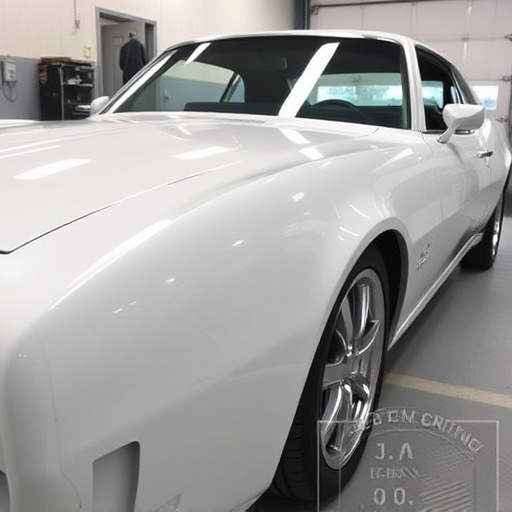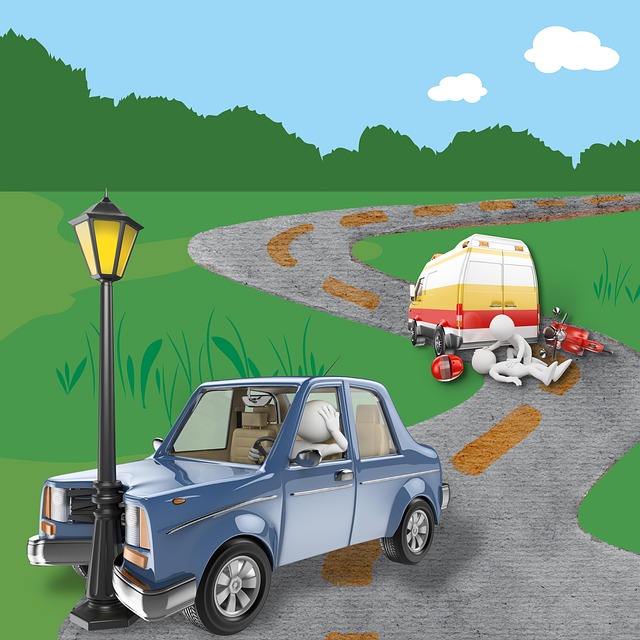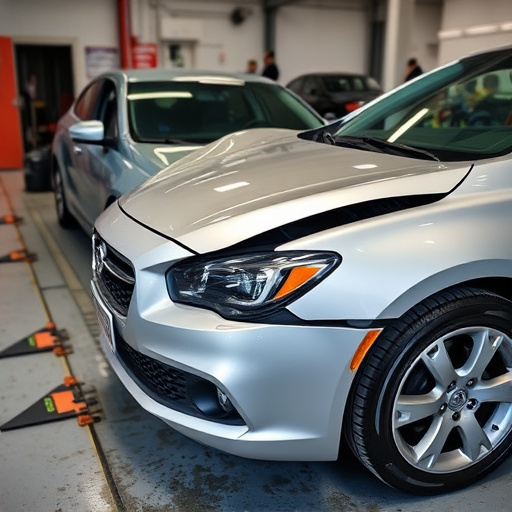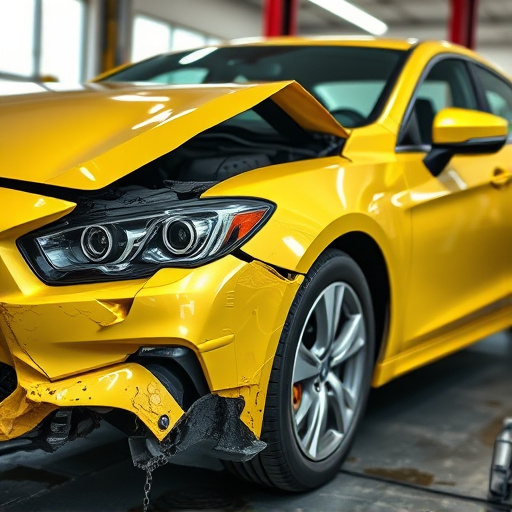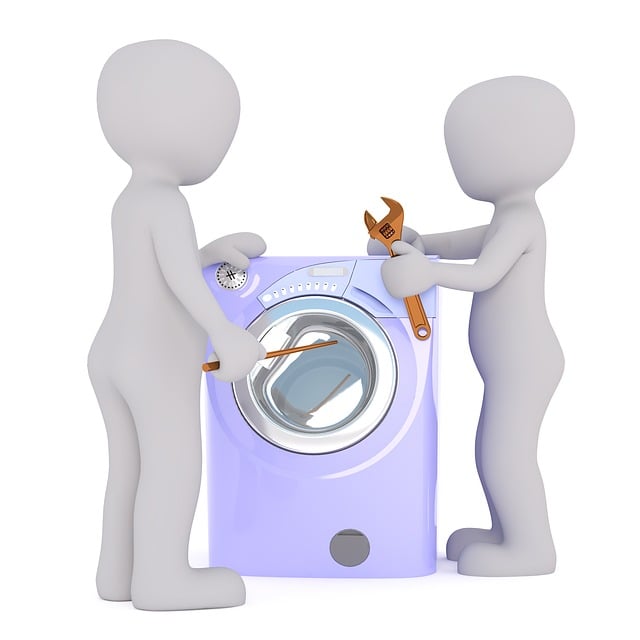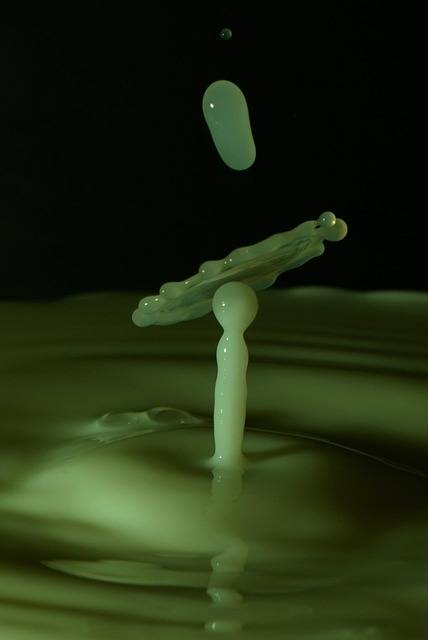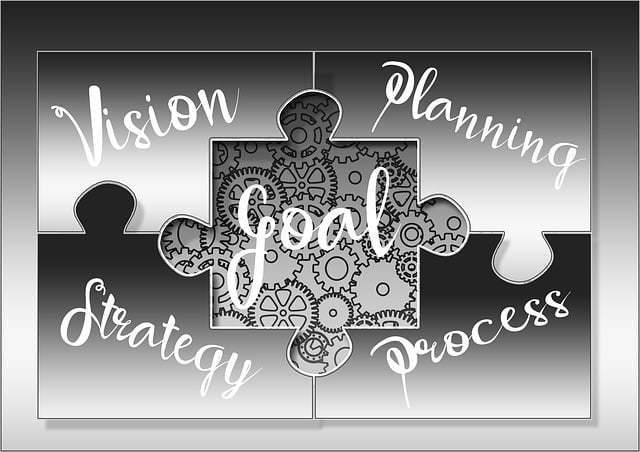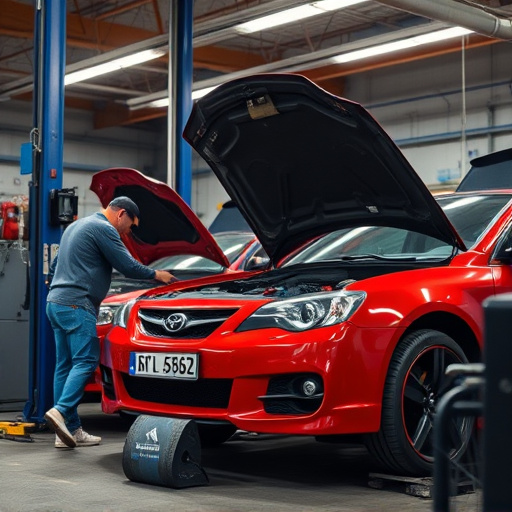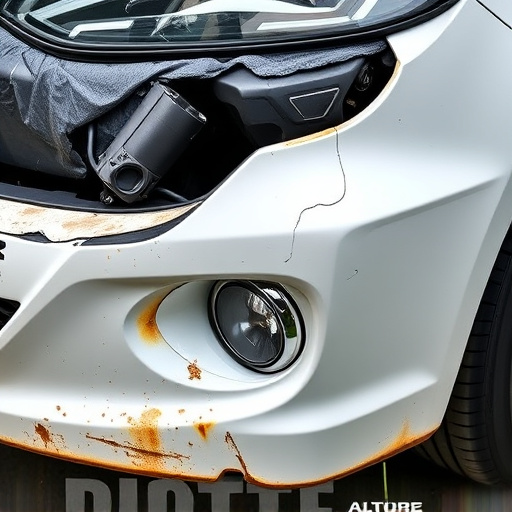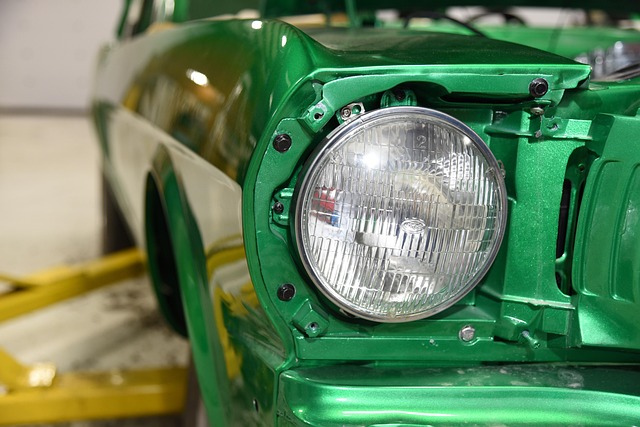Bumper damage repair is a specialized automotive service addressing both cosmetic and structural issues caused by collisions, debris, or bird droppings. While minor repairs can be DIY, significant damages require professional auto body shops with trained technicians using advanced tools like welding, metal fabrication, and paint matching. Efficiency and effectiveness are key; meticulous inspection, auto detailing, and precise dent removal restore bumpers to their original shape and integrate seamlessly with the vehicle's body. Strategic tool and material selection, including genuine replacement parts and high-quality equipment, ensures structural soundness, longevity, and a durable, seamless finish that enhances the car's overall aesthetics.
In the realm of automotive aesthetics, bumper damage repair is an art that auto experts have honed to perfection. This comprehensive guide delves into the best practices for addressing one of the most common vehicle repairs. From understanding the various types and causes of bumper damage to selecting the ideal tools and materials, these expert insights ensure efficient, effective, and long-lasting solutions. Discover how to navigate this process like a professional, restoring your vehicle’s exterior to its former sleekness.
- Understanding Bumper Damage Repair: Common Types and Causes
- Best Practices for Efficient and Effective Bumper Repairs
- Choosing the Right Tools and Materials for a Quality Repair Job
Understanding Bumper Damage Repair: Common Types and Causes

Bumper damage repair is a specialized service within the automotive industry, addressing aesthetic and sometimes structural issues that impact the front or rear bumpers of vehicles. Understanding bumper damage repair involves recognizing various types of damage, which can range from minor scratches and dents to more severe cracks and deformities. Common causes include collisions, parking incidents, road debris, and even bird droppings, all of which can compromise the integrity and appearance of a vehicle’s bumpers.
While some minor repairs can be performed as DIY projects using specific bumper repair kits, most significant or complex damages require professional auto body shops with trained technicians. These experts employ advanced tools and techniques, such as welding, metal fabrication, and paint matching, to restore bumpers to their original condition or enhance them in alignment with modern design trends, ensuring both functionality and aesthetic appeal in the process of vehicle body repair.
Best Practices for Efficient and Effective Bumper Repairs
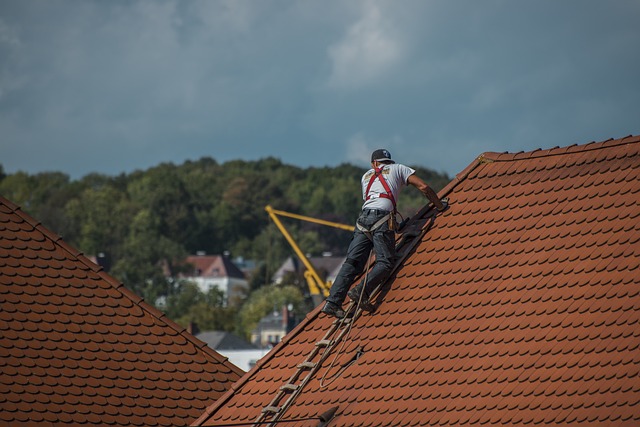
When it comes to bumper damage repair, efficiency and effectiveness are key. Auto experts recommend a systematic approach that begins with thorough inspection. It’s crucial to identify the extent of the damage—whether it’s a minor dent, a deep crack, or complete bumper replacement needed. This step ensures that the right repairs are performed, saving time and resources.
For efficient repairs, consider combining auto detailing with specialized car paint services. Dent removal techniques can restore the bumper’s original shape while ensuring seamless blending with the rest of the vehicle’s body. Additionally, using high-quality paints and proper application methods guarantees a durable finish that complements the car’s overall aesthetics.
Choosing the Right Tools and Materials for a Quality Repair Job
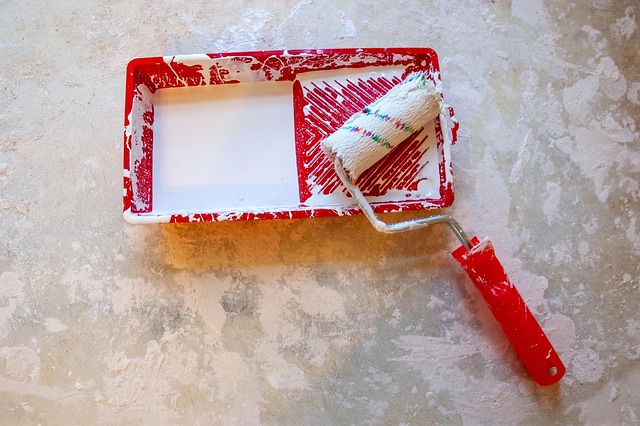
When undertaking bumper damage repair, selecting the appropriate tools and materials is paramount for achieving a high-quality result. Auto experts emphasize that using genuine or certified replacement parts ensures structural integrity and long-lasting durability. These parts are designed to fit seamlessly with your vehicle’s frame, maintaining its original specifications—a crucial aspect in preventing future alignment issues.
Moreover, professionals recommend investing in top-tier tools specifically tailored for bumper repair. This includes specialized plastic welding equipment, precision cutting tools, and surface preparation materials. Such tools enable accurate measurements, clean cuts, and effective bonding, resulting in a restoration that matches the vehicle’s original finish and overall aesthetic appeal.
Bumper damage repair is both an art and a science, requiring a deep understanding of automotive structures and advanced techniques. By adhering to the best practices outlined in this article—from identifying common types of bumper damage to selecting the right tools and materials—car owners can ensure efficient, effective, and long-lasting repairs. Remember, a professional approach not only restores the aesthetic appeal of your vehicle but also maintains its structural integrity, ultimately saving you time and money in the long run.
